Abstract
Behavioral contrast was obtained in two experiments, which both employed a standard free-operant successive discrimination (a multiple variable-interval extinction schedule), without the occurrence of reductions of response rate in the extinction component. In Experiment I, one group of four pigeons was trained on a multiple schedule in which one stimulus was associated with a variable-interval schedule and the second stimulus with response-independent reinforcement on a free variable-interval schedule. Though by the end of this training three pigeons were responding very little to the second stimulus, when this stimulus was associated with extinction all subjects showed a contrast effect. In Experiment II, eight pigeons were trained extensively to respond to a single stimulus on a variable-interval schedule, before a second stimulus associated with extinction was introduced. This second stimulus was dissimilar to the initial stimulus and five pigeons never responded in its presence. Nevertheless, all pigeons showed a contrast effect and there was no evidence that the effect was smaller in errorless subjects or smaller than in a subsequent discrimination where all subjects made many errors. Both experiments indicated that response reduction in one component of a multiple schedule is not a necessary condition for the occurrence of contrast.
Full text
PDF


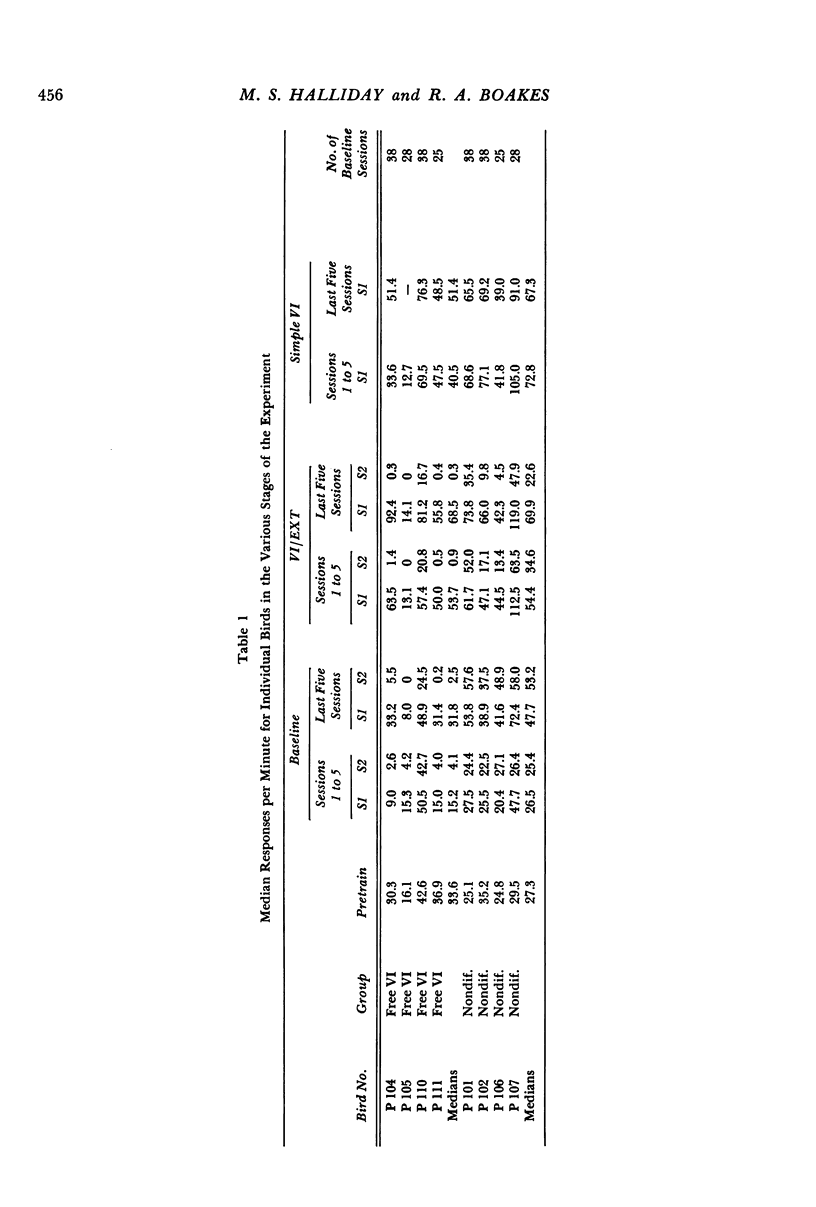
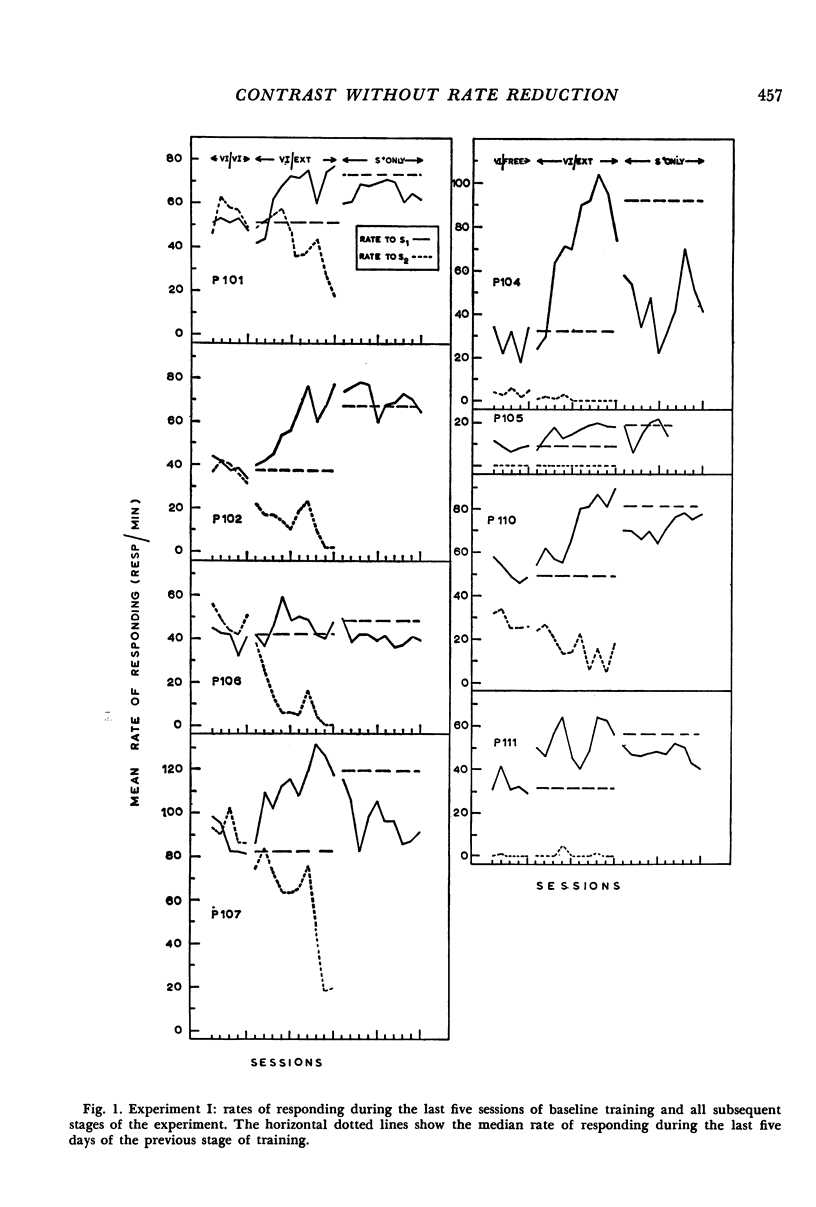
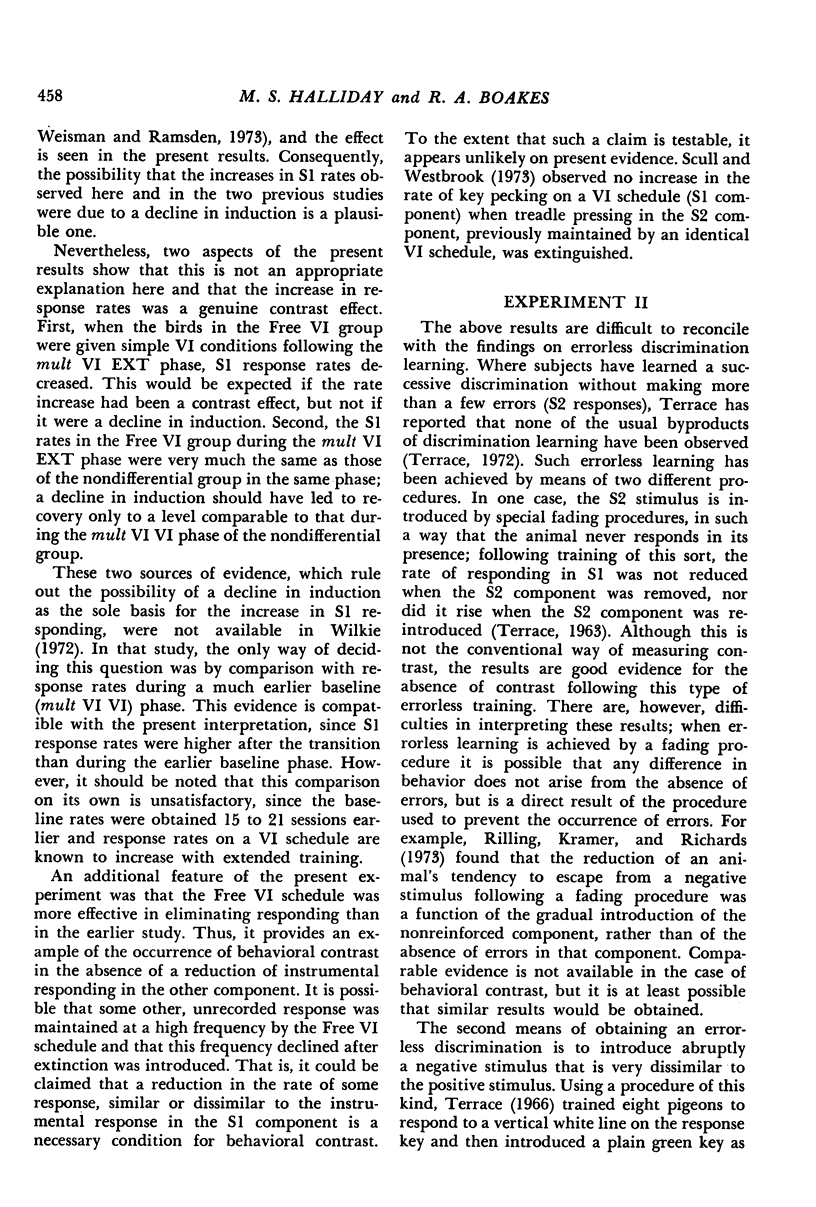

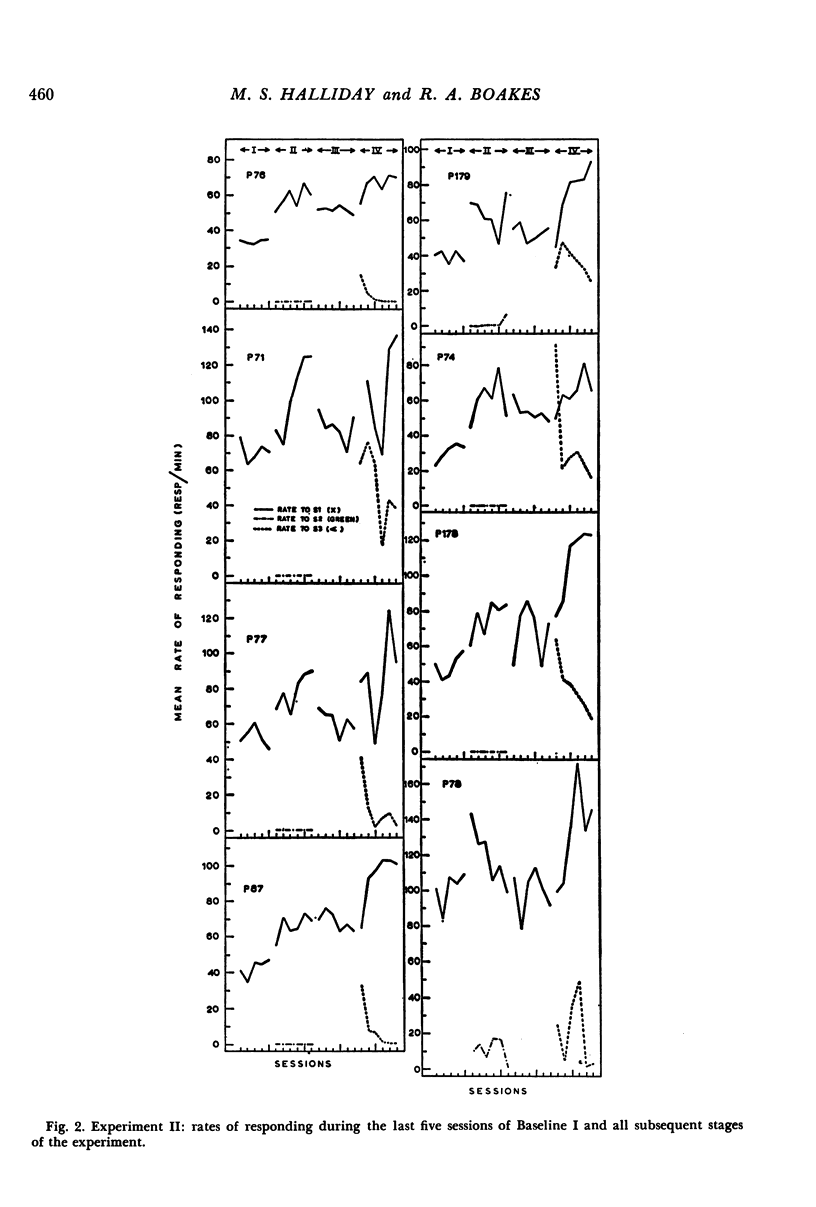

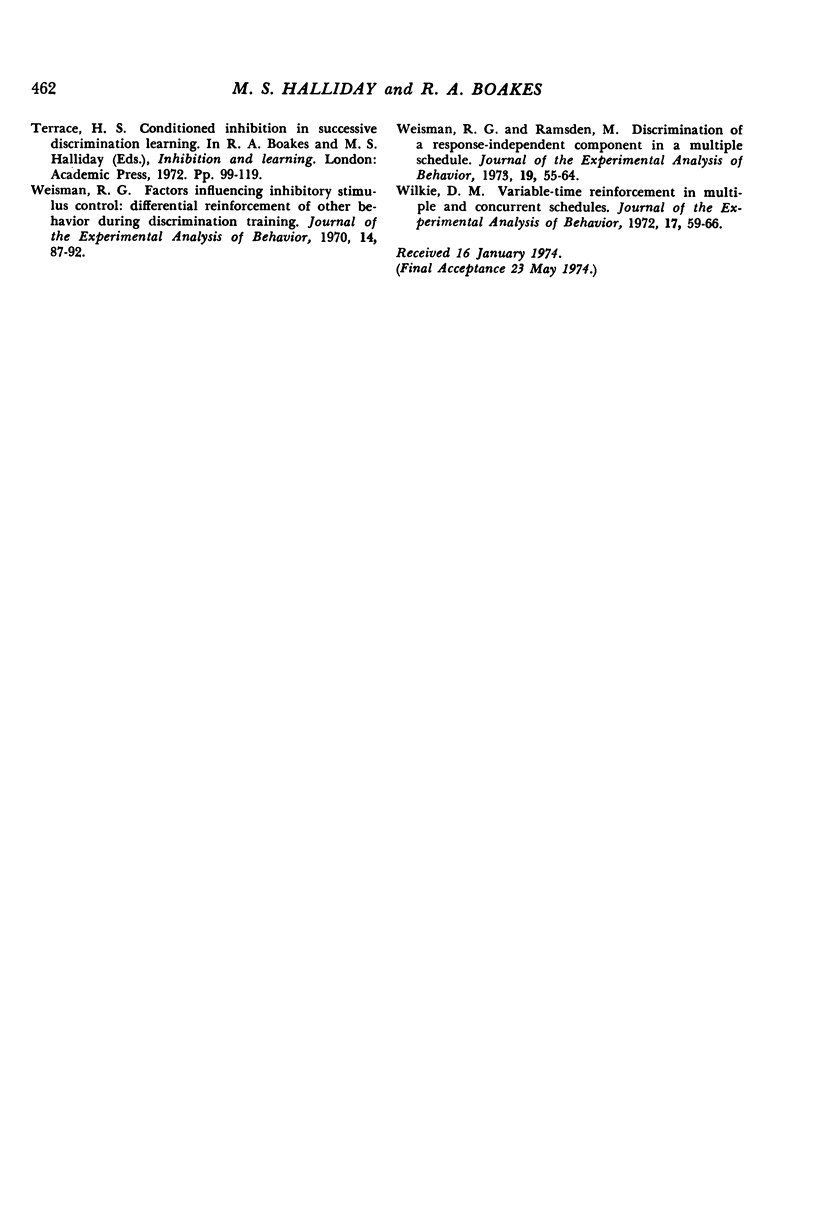
Selected References
These references are in PubMed. This may not be the complete list of references from this article.
- Boakes R. A. Response decrements produced by extinction and by response-independent reinforcement. J Exp Anal Behav. 1973 Mar;19(2):293–302. doi: 10.1901/jeab.1973.19-293. [DOI] [PMC free article] [PubMed] [Google Scholar]
- Herrnstein R. J. On the law of effect. J Exp Anal Behav. 1970 Mar;13(2):243–266. doi: 10.1901/jeab.1970.13-243. [DOI] [PMC free article] [PubMed] [Google Scholar]
- REYNOLDS G. S. Behavioral contrast. J Exp Anal Behav. 1961 Jan;4:57–71. doi: 10.1901/jeab.1961.4-57. [DOI] [PMC free article] [PubMed] [Google Scholar]
- Sadowsky S. Behavioral contrast with timeout, blackout, or extinction as the negative condition. J Exp Anal Behav. 1973 May;19(3):499–507. doi: 10.1901/jeab.1973.19-499. [DOI] [PMC free article] [PubMed] [Google Scholar]
- Scull J., Westbrook R. F. Interactions in multiple schedules with different responses in each of the components. J Exp Anal Behav. 1973 Nov;20(3):511–519. doi: 10.1901/jeab.1973.20-511. [DOI] [PMC free article] [PubMed] [Google Scholar]
- TERRACE H. S. Discrimination learning with and without "errors". J Exp Anal Behav. 1963 Jan;6:1–27. doi: 10.1901/jeab.1963.6-1. [DOI] [PMC free article] [PubMed] [Google Scholar]
- Terrace H. S. Discrimination learning and inhibition. Science. 1966 Dec 30;154(3757):1677–1680. doi: 10.1126/science.154.3757.1677. [DOI] [PubMed] [Google Scholar]
- Terrace H. S. Discrimination learning, the peak shift, and behavioral contrast. J Exp Anal Behav. 1968 Nov;11(6):727–741. doi: 10.1901/jeab.1968.11-727. [DOI] [PMC free article] [PubMed] [Google Scholar]
- Weisman R. G. Factors influencing inhibitory stimulus control: differential reinforcement of other behavior during discrimination training. J Exp Anal Behav. 1970 Jul;14(1):87–91. doi: 10.1901/jeab.1970.14-87. [DOI] [PMC free article] [PubMed] [Google Scholar]
- Weisman R. G., Ramsden M. Discrimination of a response-independent component in a multiple schedule. J Exp Anal Behav. 1973 Jan;19(1):55–64. doi: 10.1901/jeab.1973.19-55. [DOI] [PMC free article] [PubMed] [Google Scholar]
- Wilkie D. M. Variable-time reinforcement in multiple and concurrent schedules. J Exp Anal Behav. 1972 Jan;17(1):59–66. doi: 10.1901/jeab.1972.17-59. [DOI] [PMC free article] [PubMed] [Google Scholar]


